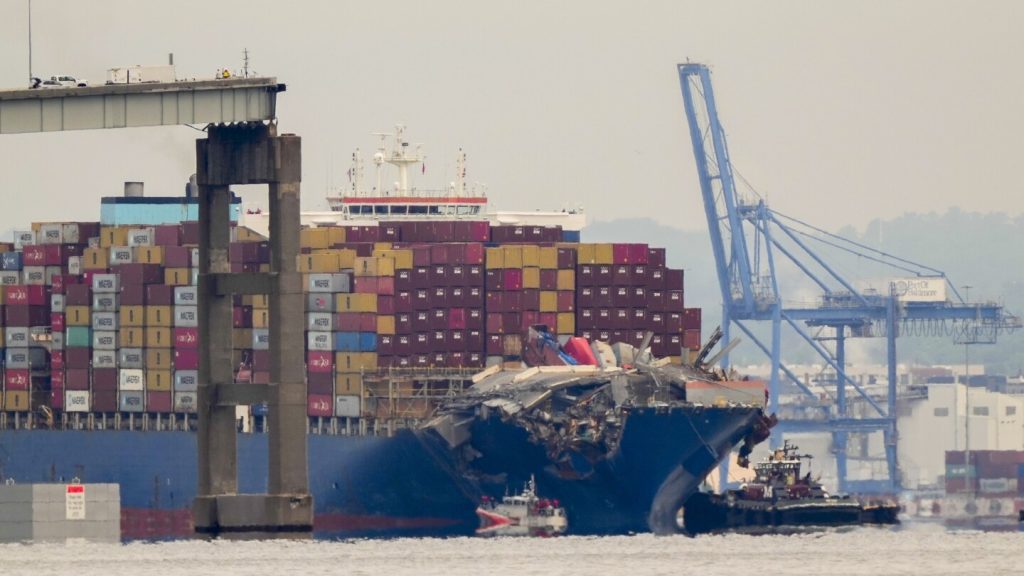After a tragic incident on March 26, the main shipping channel into Baltimore’s port has finally reopened to its original depth and width. The collapse of the Francis Scott Key Bridge blocked most maritime traffic into the harbor, leading to a massive cleanup effort to remove an estimated 50,000 tons of steel and concrete from the Patapsco River. The wreckage of the fallen bridge resulted from a container ship losing power and crashing into one of the supporting columns, causing six members of a roadwork crew to fall to their deaths. The victims were Latino immigrants working on an overnight shift to fill potholes on the bridge. The Port of Baltimore, known for processing a large volume of cars and farm equipment, was effectively closed for weeks while crews worked to remove the debris.
On May 20, the cargo ship Dali, which had been stuck amidst the wreckage for almost two months, was refloated and guided back to port. Following the successful removal of the Dali, crews opened a channel that was 50 feet deep and 400 feet wide, with plans to fully reopen the federal shipping channel at 700 feet wide to allow for two-way traffic. This development has been welcomed by thousands of longshoremen, truckers, and small business owners whose livelihoods were impacted by the collapse. Local and state officials have been working to prioritize the reopening of the port and restore normal traffic in order to mitigate the economic consequences.
The announcement of the full reopening of the main shipping channel signifies a pivotal moment for the commerce that relies on the busy port. Various agencies, including federal, state, and local entities, as well as specialists from around the world, collaborated in the salvage operations. A fleet of 18 barges, 22 tugboats, 13 floating cranes, 10 excavators, and four survey boats were used to clear the wreckage in a concerted effort. Colonel Estee Pinchasin, Baltimore district commander for the Army Corps of Engineers, expressed pride in the teamwork and unity demonstrated during the challenging undertaking. She also expressed condolences to the families of the victims, stating that their memory motivated the team throughout the salvage operations.
The Dali, which lost power shortly after departing Baltimore for Sri Lanka on March 26, is subject to investigations by the National Transportation Safety Board and the FBI. The investigations aim to determine the causes of the power outages experienced by the vessel before its voyage, as well as any possible criminal factors leading to the collapse of the bridge. Officials are hopeful that the bridge can be rebuilt by 2028 to restore normalcy to the transportation infrastructure. Despite the challenges and tragedies that occurred as a result of the collapse, the reopening of the main shipping channel presents an opportunity for the port and the individuals whose livelihoods depend on its operations to begin rebuilding and moving forward.


